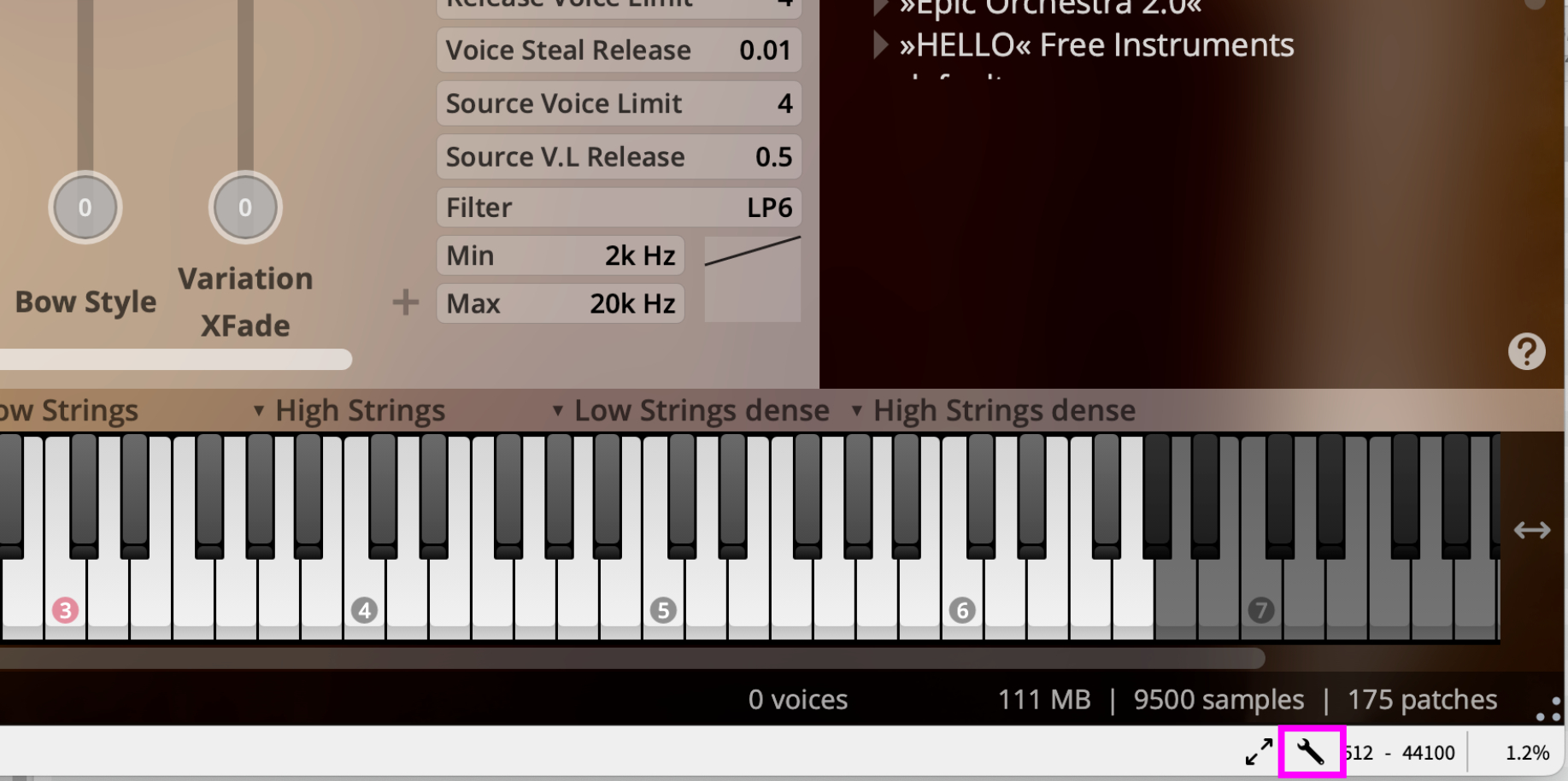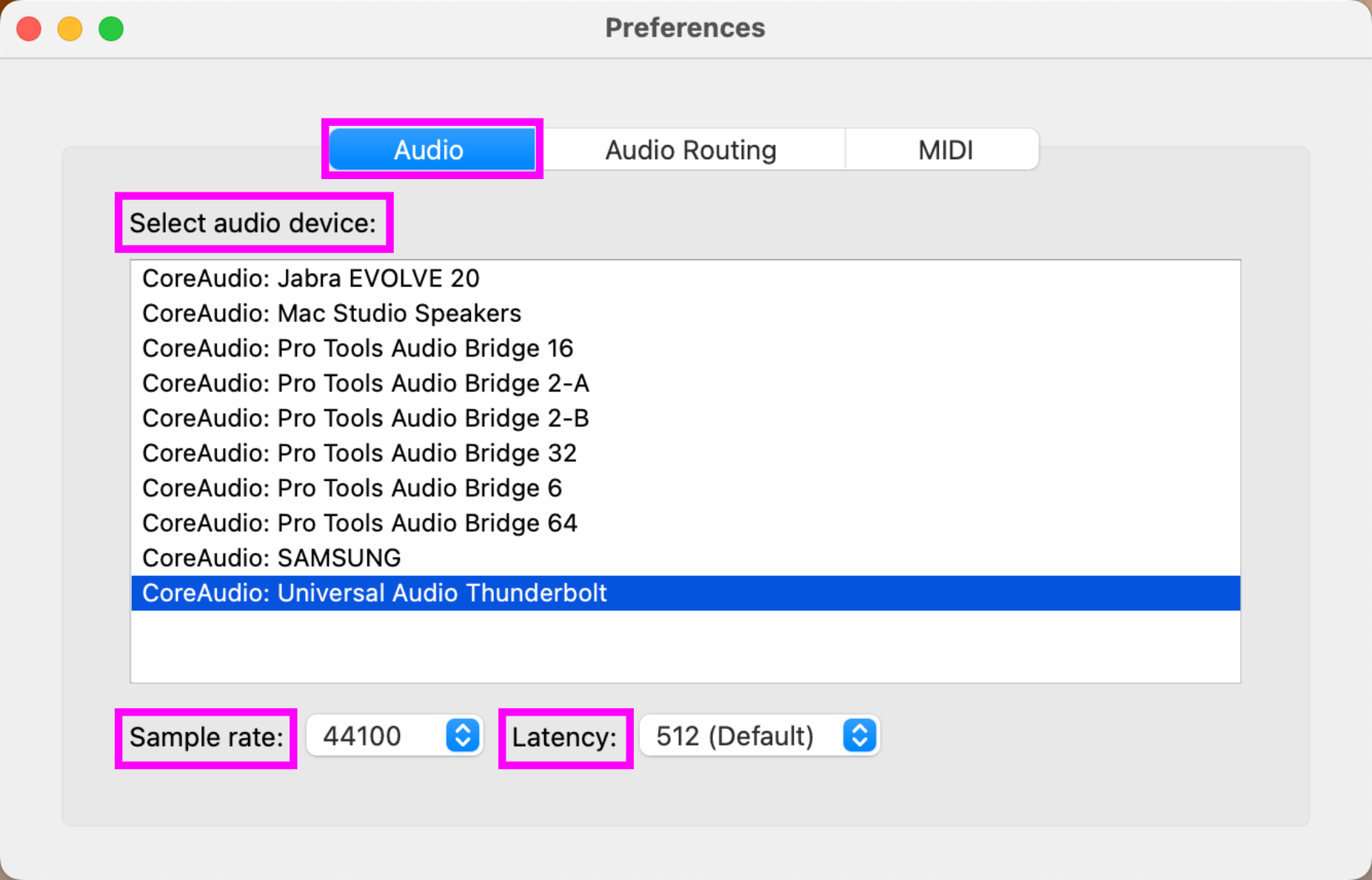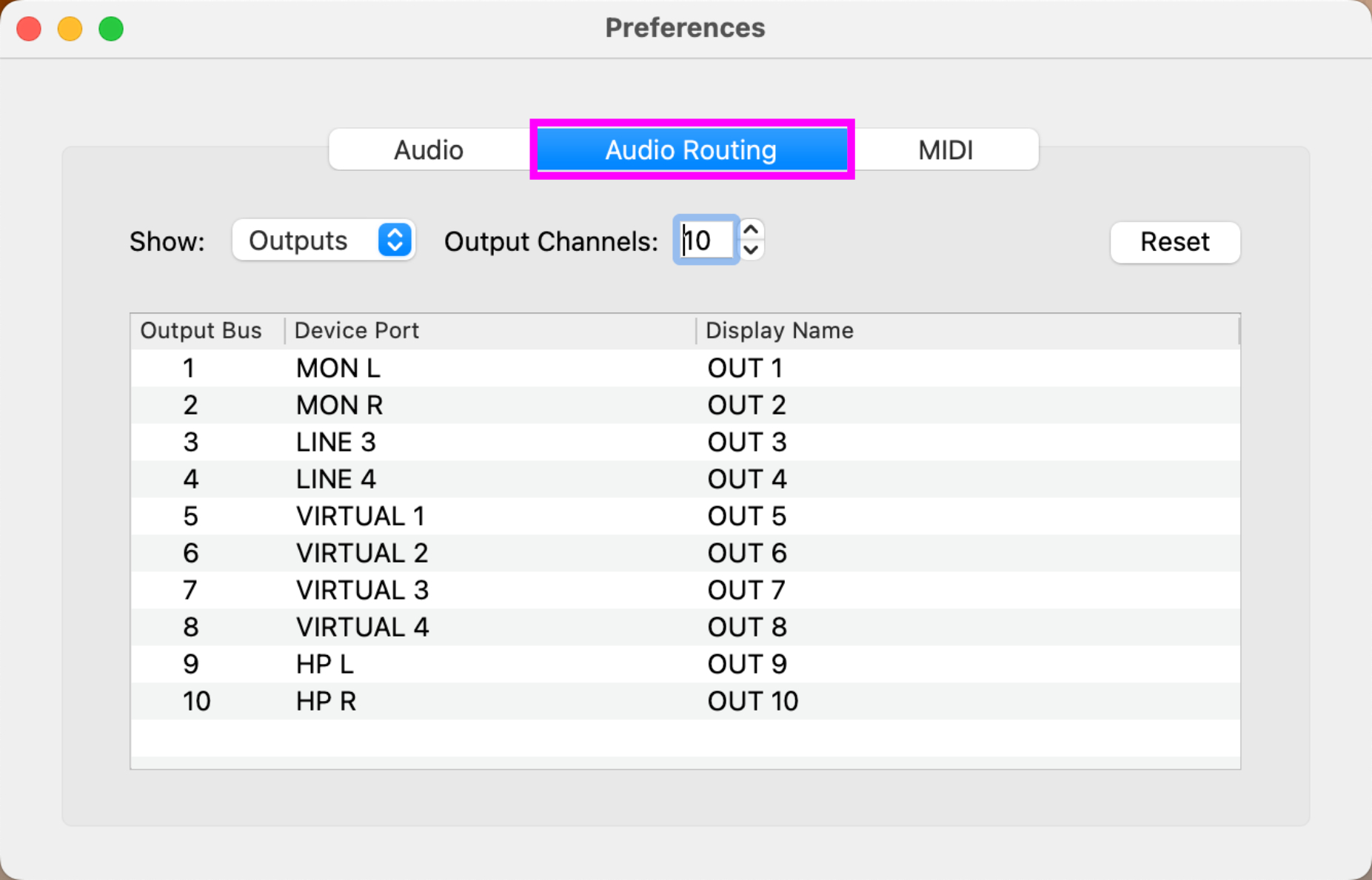You can also use Vienna Synchron Player as a stand-alone virtual instrument. As the Vienna Synchron Player stand-alone version is not connected to or embedded in any sequencer, you have to configure the preferences for Audio and MIDI first. All other features are identical to the plug-in version of Vienna Synchron Player.
Access the Preferences for the Stand-alone version with the small wrench icon in the lower right corner:

The Audio tab lets you choose your preferred soundcard. You can set the Sample Rate and Latency of your soundcard. The Audio Routing tab lets you assign the audio output pair, depending on your selected soundcard.


In the MIDI tab, you decide which MIDI Ports will be available for the Vienna Synchron Player.
Smoothing will smooth incoming MIDI synchronization when needed.
